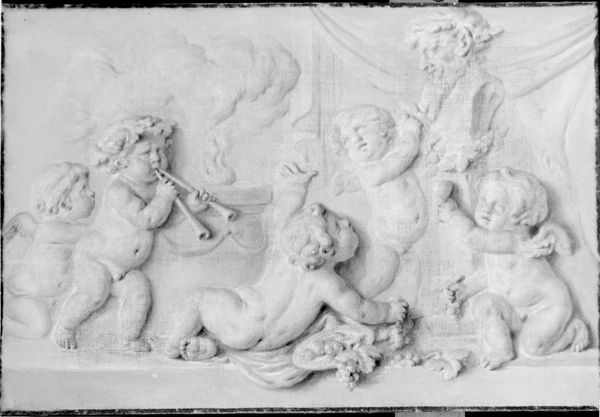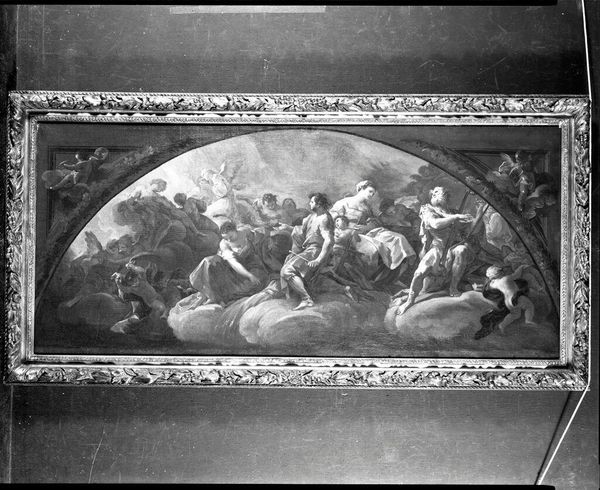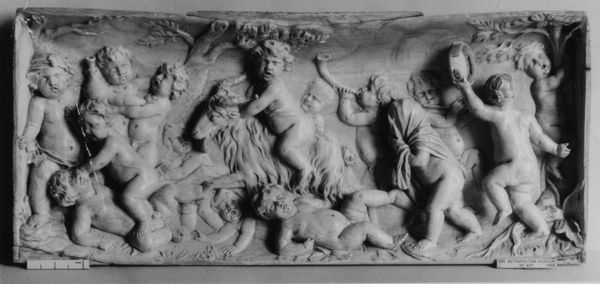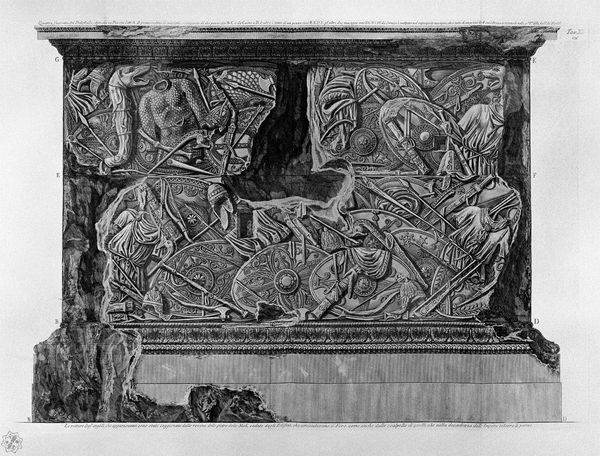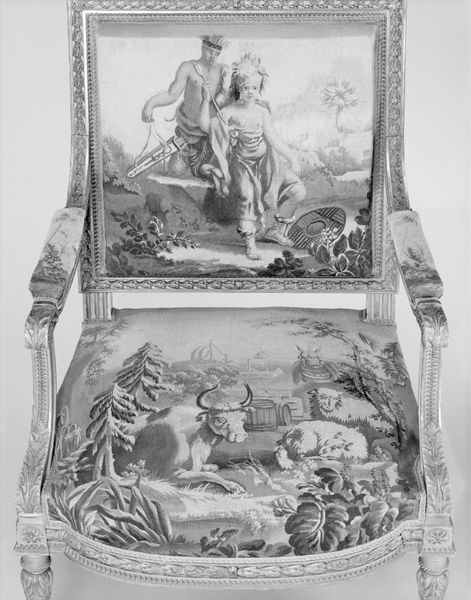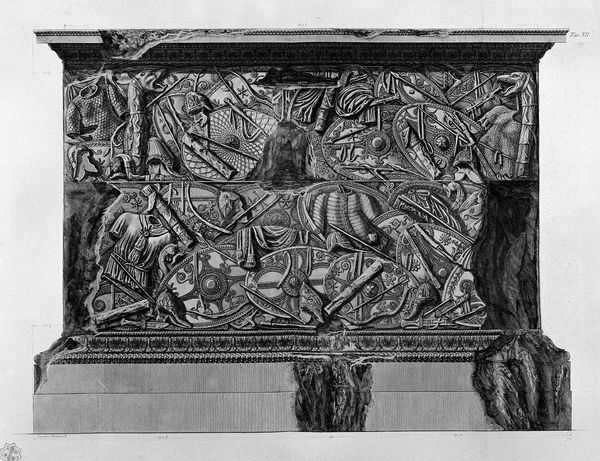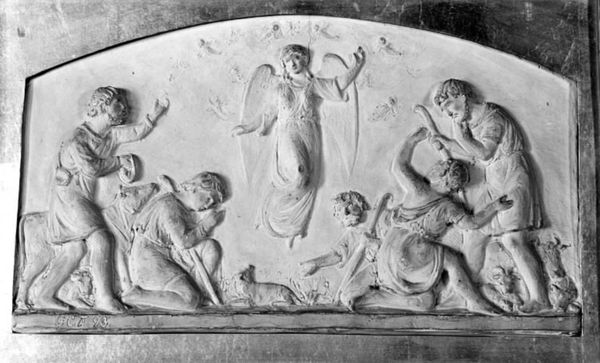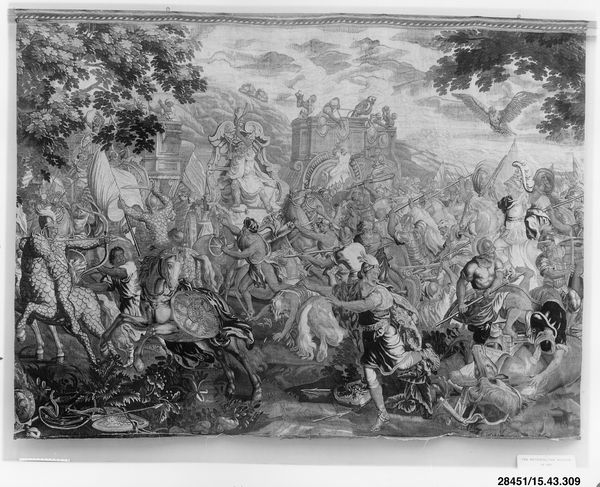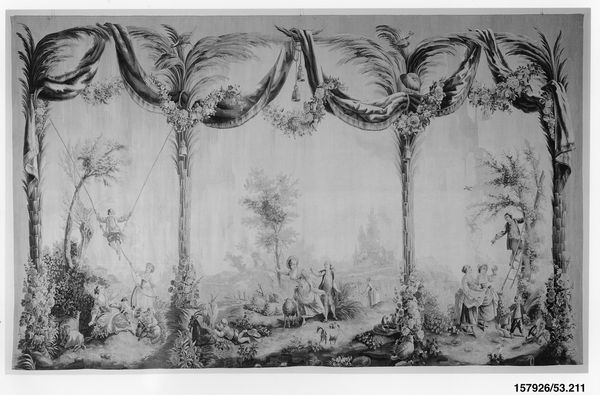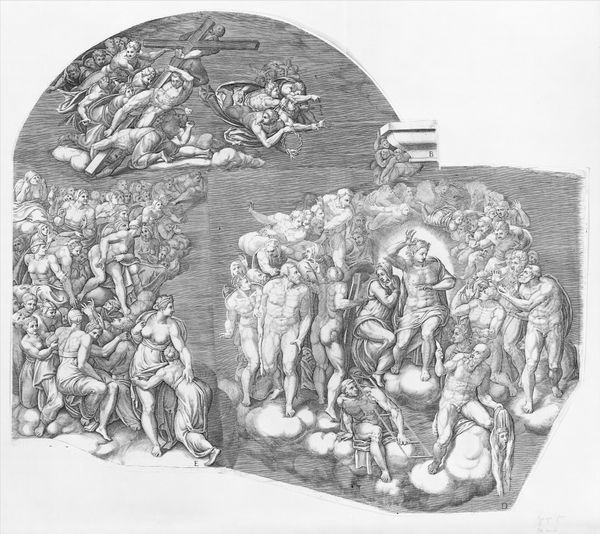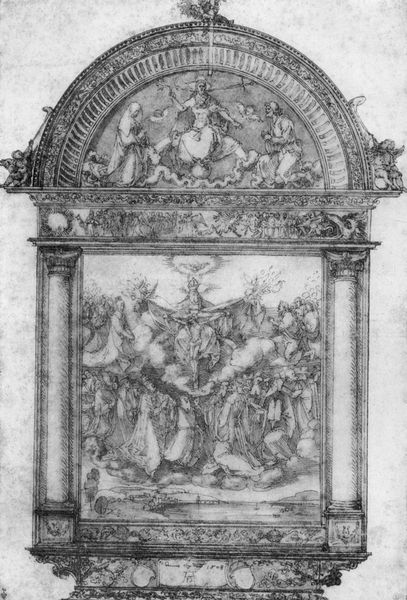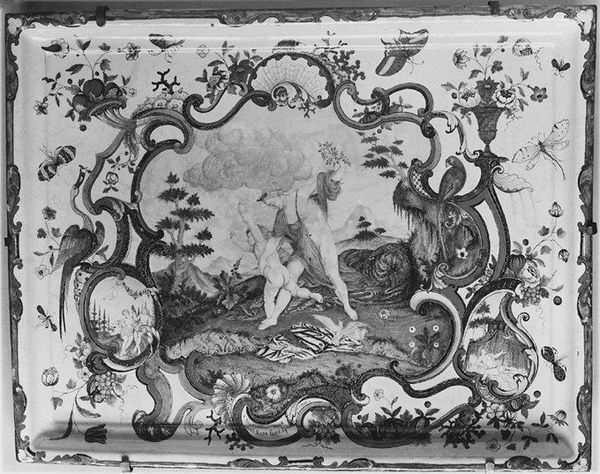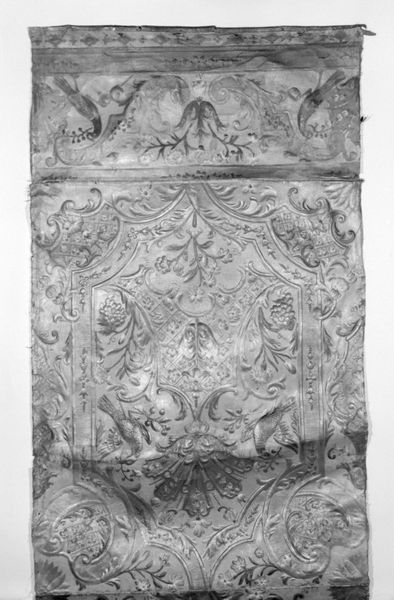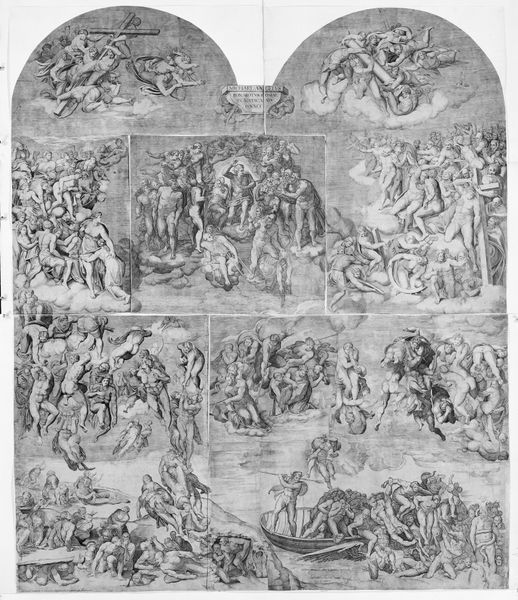
L'Aurore du XXieme Siècle (Dawn of the Twentieth Century) 20th century
0:00
0:00
relief, sculpture
#
allegory
#
neoclassicism
#
sculpture
#
relief
#
figuration
#
sculpture
#
history-painting
#
decorative-art
Dimensions: Overall: 14 × 24 in. (35.6 × 61 cm)
Copyright: Public Domain
Curator: Welcome! We're standing before Jules Edouard Roiné's "Dawn of the Twentieth Century," an exquisite relief sculpture created sometime in the early 1900s, residing here at the Metropolitan Museum of Art. Editor: It immediately strikes me as intensely busy; there's an incredible density of figures and symbols vying for attention. It feels…optimistic, but also overwrought. Curator: I agree about the density. Roiné seems to have aimed for an encyclopedic vision, reflecting the ambition and anxiety of the era. Historically, relief sculptures like this were often used in civic settings to communicate complex ideas about a nation’s identity and aspirations. Editor: And, from a purely formal standpoint, that high relief creates an amazing play of light and shadow. The modeling is very precise and renders a dramatic tableau of bodies, drapes, and textures, all clamoring in this tight picture plane. There’s almost no rest for the eye. Curator: Exactly. Consider the composition: the arrangement of figures in layered tiers, leading the eye towards that radiant, almost celestial group at the apex. There's a deliberate attempt to organize chaos, reflecting the Neoclassical revival popular in late 19th and early 20th century art. That rational structuring amidst a time of unprecedented social and technological change. Editor: There is such clarity to each individual figure but somehow feels cacophonous when assembled into the broader, complete picture. The narrative feels muddled—a pastiche of Classical allegory and what must have seemed modern ideas at the time. Curator: I think it speaks to a common anxiety: attempting to reconcile tradition with the rapidly approaching future. The allegorical figures—representing ideas like science, progress, and the arts—all jostle for a space, creating that somewhat uneasy feeling you noticed. There is tension between representing the power of the French Republic and expressing hope through the neoclassical forms. Editor: Despite the historical remove, the raw optimism is…infectious. Curator: A good reminder of art's capability to inspire future ambition in a culture or society. Editor: A worthy thing to memorialize as we look toward the possibilities of our future.
Comments
No comments
Be the first to comment and join the conversation on the ultimate creative platform.
